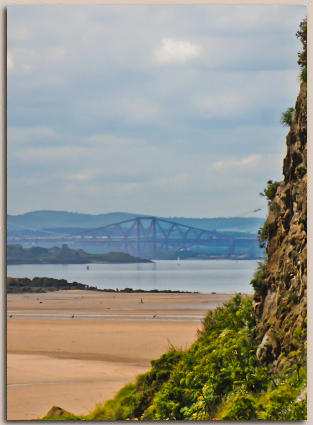![Site of Special Sientific Interest [SSSI] Site of Special Sientific Interest [SSSI]](img/rare_plants.jpg) The
David Bellamy Conservation Awards for Caravan Parks The
David Bellamy Conservation Awards for Caravan Parks
For the 16th year running, Sandhills caravan park
has been awarded the Gold standard for its contribution to
the environment such as landscaping, site layout, tidiness,
condition of grass areas, colour of caravans, recycling policy,
tree planting, flowers and the location of many rare plants. Bird boxes and
feeding platforms have been constructed including a pond under
a small waterfall at the beach side.
The Cliffs below the site and a large area of the sand and sand dunes are owned by Sandhills and are within a Site of Special Scientific Interest (SSSI) which is only one of two in the World.
Many rare plants are documented by the Nature Conservation Foundation and grow on the cliffs and lower areas.
Rare insects including the rare Northern Brown Argos Butterfly
which is scarce in Scotland and declining in Britain have
also been seen in the area.
Jim (the proprietor) takes great pride in the investment of resources at Sandhills
and is delighted to have won the Gold Award for the 14th
consecutive year.
Pettycur's Bio diversity
Pettycur is probably the best known Visean plant putrefaction
site in the World, whose fossils have been studied for over
a Century. The assemblage is quite distinctive, with most
of the species being known from nowhere else.
Lycopods and Ferns predominate but also present are Equisetales,
including the oldest known example of the Sphenophyllales
and Pteridosperms. The seeds of the latter have the oldest
known true micropyles and provide unique evidence of the transition
from the more primitive salpinx-type pollen capture apparatus.
Although not as abundant as in earlier years, specimens are
still to be found and there remains much research potential.
A site of outstanding international Importance.
Biological
The Site includes extensive areas of foreshore with
sand, rock and shingle. These are used for feeding and roosting
by large flocks of wintering waders, which together comprises
the largest concentration of waders on the north shore of
the Outer Firth of Forth. Nationally important numbers of
Knot and regionally important numbers of Bar-tailed Godwit
and Oystercatcher occur in Winter, together with a nationally
important population of Goldeneye in Kirkcaldy Bay.
 The
SSSI contains the largest and most diverse areas of coastal
grassland and cliffs in West Fife, with more than 200 species
of vascular plants present, of which at least 12 are regionally
scarce. The
SSSI contains the largest and most diverse areas of coastal
grassland and cliffs in West Fife, with more than 200 species
of vascular plants present, of which at least 12 are regionally
scarce.
Calacreous grassland is abundant, usually associated with
rock outcrop and cliffs. Herbs such as Wild Thyme Thymus
Praecox, Common Rockrose Helianthemum nummularium and Bloody
Cranesbill Geranium sanguineum are typical with rarities
such as Viper's Bugloss Echium vulgare, Wild Clary Salvia
hormioides and Thyme Broomrape Orobanche Alba, a species
which is also scarce in Britain.
Maritime grassland is of limited occurrence with abundant
Thrift Armeria Maritima and a variety of associates including
Distant Sedge Carex Distans and Kidney Vetch Anthyllis
Vulneraria. Tall, herb-rich neutral grassland occur extensively
and the locally rare Hemp-agrimony Eupatorium cannabinum,
whilst mixed scrub is also widespread, with Burnet Rose Rosa
pimpinellifolia and much Blackthorn Prunnus spinosa. Small
areas of beach-head saltmarsh and dune also occur, with beds
of Narrowleaved Eelgrass Zostera angustifolia on the mudflats
of Burntisland Bay.
Several species of insects which are scarce in Scotland occur
within the site, including the Weevil Miarus Campanulae
and the Moth Stigmella Plagiocolella, a rare butterfly in
Fife which is scarce and declining in Britain, is also found
here, the larvae feeding on Rock-rose.
History
Sandhills is one of the oldest family owned Caravan Park in Scotland.
In 1901 an Edinburgh business man bought the right to extract sand from the bay. This sand was used for the construction of the Rosyth Dockyards from 1903 onwards, at that time Mr McCulloch Grand Father was in charge of pulling the sand up the hill using wheeled carts powered by a Steam engine to be emptied on trains from an overhanging bridge.
Sandhills first started off as a campsite with tents for the early holiday makers in search of
a relaxing location, in the 1930 the site was well developped with tents,
wooden chalets, old buses and tramcar bodies.
The site was purchased in 1985 from British Rail and was then cleared and caravans were sited from 1987 onward, constructed solely by Mr James McCulloch and joined by an assistant Mr Sam Duke in 1991.
Download History of Sandhills Caravan Park (pdf 21MB) now.
|